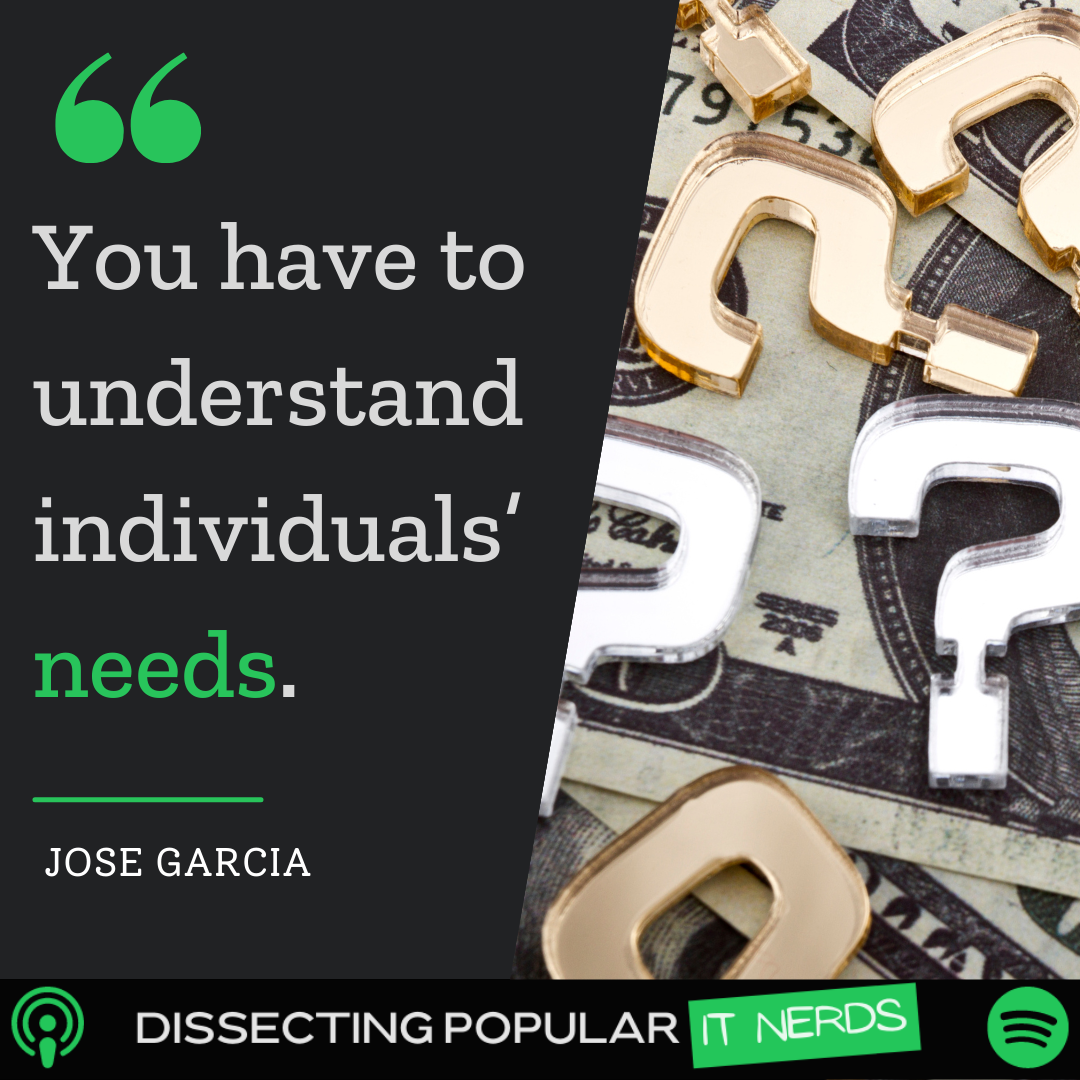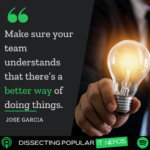[0:18] Can you introduce yourself and tell us a little about your role and what you do?
I’m currently IT Manager for Datamark. My dad was an electronic technician and would take things apart to fix, and that was my introduction to technology. I started getting interested in how technology works, which led me to computers.
[01:50] What kind of experience do you have with electronic repair?
My dad would explain to me what each component did and how. He had a box of broken radios and CD players, and I would play with them when I was 13. After a couple of weeks of researching, I eventually had a Frankenstein radio that played CDs. That led to him teaching me more, and I used that in high school for projects, etc.
[06:55] How did you progress from there to computer systems and your career?
I picked up books about electronics from the library, which led to learning how to get computers to work for you. I got my first computer at 15. I went into programming classes, C++, Visual Basic, etc. It was around the time of those free AOL trial discs and dial-up. I also had an E-Machine. Those classes were a defining moment and made me want to get into programming and software.
[13:55] How did you find the switch from structured programming to the object-oriented world?
Cobalt was an introduction to programming, and I loved that you could pick from different areas to create your own programs. When I moved to Visual Basic in college, I learned how to use it day to day and how it could be used in everyday life.
[16:45] After high school did you go straight to college, work, or both?
I started working at EPCC. It was the student technology service where you could shadow and learn from the IT department. It introduced me to the hardware aspect of things and networking and connectivity. Then there was an opportunity for me to go to Goodwill and be a level one instructor, and so it was teaching generally older people about computers to learn new skills and get out in the job market. How do you do that? You take away the fear. I would have students take apart the computers to see how they worked.
[24:40] Was there anything else you learned from that experience?
Customer service. Understanding their needs and learning to communicate to individuals in a way that worked for them.
[29:50] What did you do after Goodwill?
I moved on to be a logistics clerk at a transport company, which opened doors to other opportunities. The TMS system there allowed for creating automation, so I would learn how to automate some of my work. I would go to other departments and see what they were doing IT-wise. I created macros and helped them with data comparisons. Then I moved on to a helpdesk position with them.
[37:24] What did you learn on the helpdesk?
I was able to improve efficiency, create things that could help run installs in the background, save time, and automate things without getting up at 3:00AM to get things done. I was able to learn and use the newest technologies out there. I learned how the operations workflow worked.
[41:50] How did you go from a helpdesk position to a leadership position?
Before becoming a leader, I was finding ways to make the team more efficient. Doing that helped me get offered the position; looking at the team as a whole instead of focusing on myself. As a leader, anything I would show my team and help them improve, gave me extra time to go learn something else, and so on.
[55:00] Where did you go from that position?
From there I went on to be IT Director, and that involves dealing with multiple teams, multiple needs, and understanding what everyone needs. I had to understand my teams. It’s about gaining trust. How can my department help them? It goes both ways; it helps them and upper leadership understand that you only have the business’ best interests at heart when you ask for tools and technology.
[61:01] Tell me about Datamark.
My team is in charge of the US, but there is a global team. We have 450 servers globally to support. I have 7 people, technicians, engineers, and sys admins. It’s a small team, but there is a lot on their shoulders. They know their stuff. There’s a lot of potential for growth and I am learning new things all time. We are much more security-focused.



